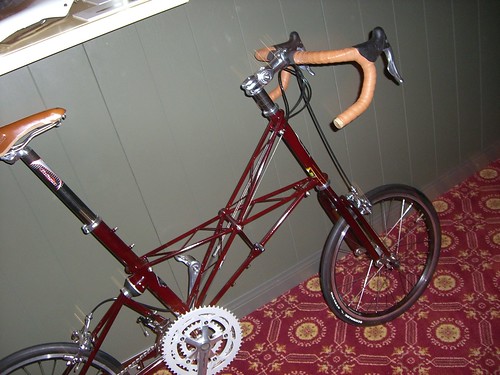The Open Bike Computer, or OBiCo is a fascinating new bike computer project.

It can be used as a normal bike computer, of course. But it can also be used as a heart rate monitor (taking input from Polar and Sigma brand chest straps), a music player (it plays OGG as well as MP3) and a GPS receiver. It takes an external memory card (the widely available micro-SD card), has a high quality TFT screen and a USB interface for connection to a PC.
The USB connection can be used to charge the internal lithium ion battery. Alternatively (and this deserves a drum roll) a hub dynamo, such as the Schmidt Original Nabendynamo (SON) can be used to charge as you ride.

You may at this point have noticed that it's very unlike a typical commercial bike computer, lacking proprietary accessories and software... well it gets better, much better.
The Obico will come with a custom API for software development. So if you're not happy with the software that comes with the device, you can write your own.
It will also feature the Embedded Linux operating system to the Obico could be used just like a regular computer, in so far as any Linux computer is regular!
The main features of the Obico are:
- No batteries required! A hub dynamo will be used to charge a li-ion cell.
- Easy to use.
- Audio interface, so you can listen to your favorite music while cycling.
- High quality color tft-display, that adapts automatically to the lighting conditions.
- Visualization of:
- speed
- heart frequency
- odometer
- audio data
- Logging your tour data like GPS coordinates, heart frequency, speed and other parameters to a MicroSD-Card.You can synchronize these data with your PC lateron. The amount of logged data depends on the size of your SD-Card.
- GPS support is planned as an option. Location plans are scheduled.
- New program features for this computer are for free and can be downloaded from this webpage.
The main processor is an ARM9 derivative. It is supported by a second processor, which controls the peripherals and assumes the tasks of the power management. The obico board has the following features:
- 32 / 64 / 128MB Mobile SDRAM
- Micro-SD Interface
- AC97 Audio Interface to play MP3, OGG, ...
- high quality, background lightened TFT-color display
- HRM - Receiver (Pulse band receiver)
- GPS - Receiver (optional)
- 3 axis gravitation sensor
- ambient light sensor
- Lithium Polymerakku, that is loaded per USB or dynamo
It's still at the prototype stage, but if this project were based on genuinely open standards and free software, and received good development community support, this has the potential to be truly groundbreaking and revolutionary.















